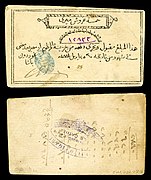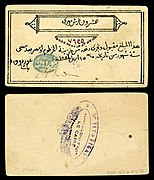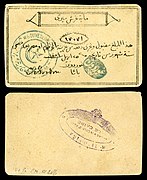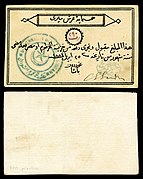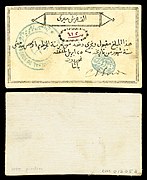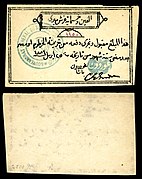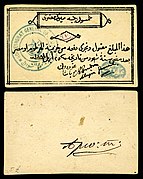Wikipedia:Picture of the day/November 2022
|
Featured picture tools: |
These featured pictures, as scheduled below, appeared as the picture of the day (POTD) on the English Wikipedia's Main Page in November 2022. Individual sections for each day on this page can be linked to with the day number as the anchor name (e.g. [[Wikipedia:Picture of the day/November 2022#1]] for November 1).
You can add an automatically updating POTD template to your user page using {{Pic of the day}} (version with blurb) or {{POTD}} (version without blurb). For instructions on how to make custom POTD layouts, see Wikipedia:Picture of the day.
November 1

|
|
The Khone Phapheng Falls and Pha Pheng Falls together form a waterfall located in Champasak province on the Mekong River in southern Laos, near the border with Cambodia. At 10,783 metres (6.7 miles) in width, it is the widest waterfall in the world. Photograph credit: Basile Morin
Recently featured:
|
November 2

|
|
Sphaerechinus granularis is a species of sea urchin in the family Toxopneustidae, commonly known as the violet sea urchin. Its range includes the Mediterranean Sea and the eastern Atlantic Ocean, from the Channel Islands south to Cape Verde and the Gulf of Guinea. It favours sheltered locations and lives on rocks covered with seaweed or gravelly substrates. It is usually found in the neritic zone down to about thirty metres (100 ft) but occasionally down to a hundred metres (330 ft) in more exposed locations. It is also found in meadows of the seagrass Posidonia oceanica. It grazes on algae, especially encrusting coralline algae, seagrass blades and their epiphytic organisms and detritus. This S. granularis sea urchin was photographed off the coast of Madeira. Photograph credit: Diego Delso
Recently featured:
|
November 3

|
|
Shanghai is one of the four direct-administered municipalities of the People's Republic of China. The city is located on the southern estuary of the Yangtze River, with the Huangpu River flowing through it. With a population of 24.89 million as of 2021, Shanghai is the most populous urban area in China and among the most populous cities proper in the world. It is the only city in East Asia with a GDP greater than its corresponding capital. As of 2018, the Greater Shanghai metropolitan area, which includes Suzhou, Wuxi, Nantong, Ningbo, Jiaxing, Zhoushan, and Huzhou, was estimated to produce a gross metropolitan product (nominal) of nearly 9.1 trillion RMB ($1.33 trillion). Shanghai is divided into 16 county-level districts, including the Pudong district pictured here. Photograph credit: Tony Jin
Recently featured:
|
November 4

|
Gismonda is a 1919 French-language grand opera by Henry Février to a libretto by Henri Caïn and Louis Payen based on the 1894 play Gismonda by Victorien Sardou. The planned premiere in Paris was halted by the outbreak of World War I, but the composer was given leave from the French army to premiere the opera with Mary Garden in the title role at the Chicago Opera on 14 January 1919. Gismonda opened in Paris at the Opéra-Comique on 15 October, for which occasion this poster was designed by Georges Rochegrosse. Poster credit: Georges Rochegrosse; restored by Adam Cuerden
Recently featured:
|
November 5

|
|
Photograph of U.S. Consolidated B-24 Liberators just after bombing the Concordia Vega oil refinery in Ploiești, Romania on 31 May 1944 during World War II. Strategic bombing during World War II involved sustained aerial attacks on railways, harbours, cities, workers' and civilian housing, and industrial districts in enemy territory during World War II (1939–1945). Strategic bombing as a military strategy is distinct both from close air support of ground forces and from tactical air power. During World War II, many military strategists of air power believed that air forces could win major victories by attacking industrial and political infrastructure, rather than purely military targets. Strategic bombing often involved bombing areas inhabited by civilians, and some campaigns were deliberately designed to target civilian populations in order to terrorize them and disrupt their usual activities. International law at the outset of World War II did not specifically forbid the aerial bombardment of cities – despite the prior occurrence of such bombing during World War I (1914–1918), the Spanish Civil War (1936–1939), and the Second Sino-Japanese War (1937–1945). Photograph credit: Richard R. Ganczak ; restored by Buidhe
Recently featured:
|
November 6

|
|
Les Huguenots is an opera by the German composer Giacomo Meyerbeer, based on the French Wars of Religion and with a French-language libretto by Eugène Scribe and Émile Deschamps. One of the most popular and spectacular examples of grand opera, it premiered in Paris on 29 February 1836. The plot moves from day to night as the massacre of the Huguenots approaches. Act 1 is set in the daytime, in the hedonistic surroundings of a chateau belonging to a pleasure-loving Catholic noble. Act 2 is set in sparkling sunshine in the beautiful countryside. Act 3, with near riots between Catholic and Protestant factions, happens as dusk falls. Act 4, with the plotting to massacre the Protestants, occurs at night, and Act 5, with the St. Bartholomew's Day massacre itself, occurs in the darkness of the early hours of the morning. This lithograph depicts the set design for Act 2 of the opera's premiere performance, depicting the gardens of the Château de Chenonceau in west central France. Lithograph credit: Célestin Deshayes; restored by Adam Cuerden
Recently featured:
|
November 7

|
Jeannette Rankin (1880–1973) was an American politician and advocate for women's rights, and the first woman to hold federal office in the United States. She was elected to the House of Representatives as a Republican from Montana in 1916 and again in 1940, and remains the only woman ever elected to Congress from the state. This photograph of Rankin was taken in 1917, shortly before she began her term as a member of Congress. Photograph credit: Bain News Service; restored by Adam Cuerden
Recently featured:
|
November 8
|
The Isaiah Scroll, designated 1QIsaa and also known as the Great Isaiah Scroll, is one of the seven Dead Sea Scrolls that were discovered by Bedouin shepherds in 1946 from Qumran Cave 1. The scroll is written in Hebrew and contains the entire Book of Isaiah from beginning to end, apart from a few small damaged portions. It is the oldest complete copy of the Book of Isaiah, being approximately 1000 years older than the oldest Hebrew manuscripts known before the scrolls' discovery. 1QIsaa is the only scroll from the Qumran Caves to be preserved almost in its entirety. Photograph credit: Google Art Project/Israel Museum
Recently featured:
|
November 9

|
Apollo 4, also known as SA-501, was the first, uncrewed, flight in the United States Apollo program, and the first test of the Saturn V launch vehicle, the rocket that would be used to send astronauts to the Moon. The space vehicle was the first to be launched from Kennedy Space Center in Florida, lifting off from Launch Complex 39A, where facilities designed specially for the Saturn V had been constructed, on November 9, 1967 – depicted in this photograph. The original launch date was planned for late 1966, but was delayed due to myriad problems with various elements of the spacecraft, and difficulties during pre-flight testing. Also contributing to the delays was the need for additional inspections following the Apollo 1 fire that killed the first Apollo crew in January 1967. These issues delayed the flight through much of 1967. The mission splashed down in the Pacific Ocean slightly less than nine hours after launch, having achieved its objectives. Photograph credit: NASA
Recently featured:
|
November 10

|
|
Seth P. Waxman presents oral arguments before the US Supreme Court in the case Franchise Tax Board of California v. Hyatt, a 2019 United States Supreme Court case that determined that unless they consent, states have sovereign immunity from private suits filed against them in the courts of another state. The 5–4 decision overturned precedent set in a 1979 Supreme Court case, Nevada v. Hall. This was the third time that the litigants had presented their case to the Court, as the Court had already ruled on the issue in 2003 and 2016. Illustration credit: Arthur Lien
Recently featured:
|
November 11

|
Recruitment to the British Army during World War I was carried out initially by seeking volunteers: 100,000 were called up in early August, and within two months, almost half a million men had enlisted. This 1914 recruitment poster by the Parliamentary Recruitment Committee shows a Scottish soldier in Belgium, in response to German chancellor Theobald von Bethmann Hollweg having described the Treaty of London (which protected Belgium's independence and neutrality) as a "scrap of paper" when Germany invaded Belgium in August 1914. Poster credit: Lawson Wood; restored by Adam Cuerden
Recently featured:
|
November 12

|
An example of a mizrah papercut art which serves a dual purpose: as a mizrah (decoration for the eastern wall, marking the direction of prayer), and as a shiviti, an edifying text which reminded the worshipper of the importance of prayer. Credit: Israel Dov Rosenbaum/Jewish Museum |
November 13

|
|
Xylotrupes socrates, the Siamese rhinoceros beetle or fighting beetle, is a species of large scarab beetle belonging to the subfamily Dynastinae. It is particularly known for its role in insect fighting in Thailand, where they are captured and trained by their owners to become stronger and more aggressive, with the beetle that lifts its opponent up by its horns winning. An insect may also win if its opponent crawls away, falls or is overturned. This photograph of a male X. socrates beetle on a banana leaf was focus-stacked from 23 images. Photograph credit: Basile Morin |
November 14

|
|
La Esmeralda is a grand opera in four acts composed by Louise Bertin, with a French-language libretto written by Victor Hugo, who adapted it from his 1831 novel The Hunchback of Notre-Dame. The opera premiered at the Théâtre de l'Académie Royale de Musique in Paris on 14 November 1836, with Cornélie Falcon in the title role. There was some disruption at the premiere, as members of the audience who disliked the Bertin family shouted out that the work had been written by Berlioz, an accusation which Berlioz himself denied. La Esmeralda proved to be the last opera composed by Bertin although she lived for another 40 years. This drawing is Charles-Antoine Cambon's set design for act 3, scene 1, of La Esmeralda, in which Phoebus meets with Esmeralda, and Frollo spies on them and eventually stabs Phoebus with his sword. Illustration credit: Charles-Antoine Cambon; restored by Adam Cuerden
Recently featured:
|
November 15

|
Wilhering Abbey is a Cistercian monastery in Wilhering in Upper Austria, about 8 km (5 mi) from the city of Linz. The buildings, re-constructed in the 18th century, are known for their spectacular Rococo decoration. According to the German art historian Cornelius Gurlitt, "the abbey church of Wilhering is the most brilliant achievement of the Rococo style in the German-speaking world". This photograph depicts the interior of the church, looking towards the high altar, featuring the intricate ceiling frescoes and stucco work. Photograph credit: Uoaei1
Recently featured:
|
November 16

|
Ariane is an opera in five acts by Jules Massenet to a French-language libretto by Catulle Mendès. Based on the tale of Ariadne in Greek mythology, it was first performed at the Palais Garnier in Paris on 31 October 1906, with Lucienne Bréval in the title role. One critic noted Ariane to be one of the most "Wagnerian" of Massenet's operas. This poster was designed in 1906 by the French painter Albert Maignan to advertise the opera's premiere. Poster credit: Albert Maignan; restored by Adam Cuerden
Recently featured:
|
November 17

|
Nina Simone (February 21, 1933 – April 21, 2003) was an American singer, songwriter, pianist, and civil rights activist. Her music spanned styles including classical, jazz, blues, folk, R&B, gospel and pop. The sixth of eight children born to a poor family in Tryon, North Carolina, Simone initially aspired to be a concert pianist. However, after being denied admission to the Curtis Institute of Music in Philadelphia despite a well-received audition (which she attributed to racism), she started playing piano at a nightclub in Atlantic City. She changed her name to "Nina Simone" to disguise herself from family members, having chosen to play "the devil's music" or so-called "cocktail piano". She was told in the nightclub that she would have to sing to her own accompaniment, which effectively launched her career as a jazz vocalist. She went on to record more than 40 albums between 1958 and 1974. Photograph credit: Ron Kroon for Anefo; restored by Bammesk
Recently featured:
|
November 18

|
|
The Caves of Hercules is an archaeological cave complex located in Cape Spartel, Morocco. Situated 14 kilometres (9 mi) west of Tangier, the popular tourist attraction is adjacent to the summer palace of the king of Morocco. The cave itself is partly natural and partly man-made. The man-made portion was used by Berbers to cut stone wheels from the walls to make millstones, resulting in the ridges visible on the walls in this photograph of the cave's interior. Photograph credit: Diego Delso
Recently featured:
|
November 19
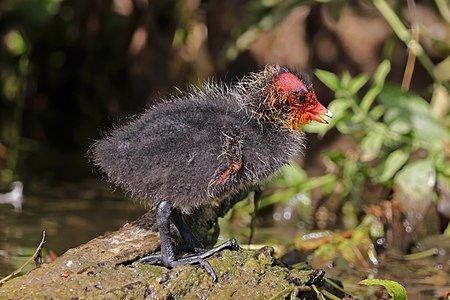
|
|
The Eurasian coot (Fulica atra), also known as the common coot, or Australian coot, is a species of bird in the family Rallidae. It is found in Europe, Asia, Australia, New Zealand and parts of North Africa. The Eurasian coot is much less secretive than most of the rail family and can be seen swimming on open water or walking across waterside grasslands. It is an aggressive species, and strongly territorial during the breeding season, with both parents involved in territorial defence. This juvenile Eurasian coot was photographed in Marais Audomarois, a biosphere reserve in Saint-Omer-Capelle, France. Photograph credit: Charles J. Sharp
Recently featured:
|
November 20

|
A yawn is a reflex consisting of the simultaneous inhalation of air and the stretching of the eardrums, followed by an exhalation of breath. Many animal species, including birds and fish, experience yawning. The study of yawning is called chasmology. Yawning (oscitation) most often occurs in adults immediately before and after sleep, during tedious activities and as a result of its contagious quality. This photograph shows a newborn girl yawning; research data strongly suggest that neither contagious nor story-induced yawning is reliable in children below the age of six years. Photograph credit: Martin Falbisoner
Recently featured:
|
November 21

|
|
Laetiporus sulphureus is a species of bracket fungus (fungi that grow on trees) found in Europe and North America. Due to its taste, Laetiporus sulphureus has been called the "chicken polypore" and "chicken-of-the-woods" Many people also think that the mushroom tastes like crab or lobster leading to the nickname "lobster-of-the-woods". The authors of Mushrooms in Color said that the mushroom tastes good sauteed in butter or prepared in a cream sauce served on toast or rice. Photograph credit: Agnes Monkelbaan
Recently featured:
|
November 22

|
Saint Anne is a Makurian wall painting estimated to have been painted between the 8th and 9th centuries, painted a secco with tempera on plaster. The anonymous work, depicting Saint Anne, the mother of Mary, was found at Faras Cathedral in Lower Nubia, located in the north of present-day Sudan. The painting was discovered by a Polish archaeological team during a campaign undertaken in the 1960s under the patronage of the United Nations Educational, Scientific and Cultural Organization (UNESCO) in Faras, before the site was flooded by the creation of Lake Nasser. Since 1964, the painting has been in the Faras Gallery at the National Museum in Warsaw. Painting credit: unknown
Recently featured:
|
November 23

|
|
Cephalanthus occidentalis is a species of flowering plant in the family Rubiaceae native to eastern and southern North America. Common names include buttonbush, common buttonbush, button-willow, buck brush, and honey-bells. It is a deciduous shrub or small tree that averages 1 to 3 m (3.3 to 9.8 ft) in height, but can reach 6 m (20 ft). The flowers are arranged in a dense spherical inflorescence 2 to 3.5 cm (0.79 to 1.38 in) in diameter on a short peduncle. Each flower has a fused white to pale yellow four-lobed corolla forming a long slender tube connecting to the sepals. The stigma protrudes slightly from the corolla. The fruit is a spherical cluster of achenes (nutlets). This C. occidentalis plant, of the occidentalis variety, was photographed flowering in Point Pelee National Park in Ontario, Canada. Photograph credit: The Cosmonaut
Recently featured:
|
November 24

|
The turkey is a large species of bird in the genus Meleagris, native to North America. There are two extant turkey species: the wild turkey (M. gallopavo) of eastern and central North America and the ocellated turkey (M. ocellata) of the Yucatán Peninsula in Mexico. Males of both turkey species have a distinctive fleshy wattle, called a snood, that hangs from the top of the beak. They are among the largest birds in their ranges. As with many large ground-feeding birds (members of the order Galliformes), the male is bigger and much more colorful than the female. This photograph, taken at Deer Island Preserve in Novato, California, shows a male Rio Grande wild turkey (M. g. intermedia) strutting – the courtship display, in which the snood (the erectile, fleshy protuberance on the forehead) engorges with blood, becomes redder and elongates, hanging well below the beak. Photograph credit: Frank Schulenburg
Recently featured:
|
November 25

|
Julie d'Aubigny (1670/1673 – 1707), better known as Mademoiselle Maupin or La Maupin, was a 17th-century French opera singer. Little is known for certain about her life; her tumultuous career and flamboyant lifestyle were the subject of gossip, rumor, and colourful stories in her own time, and inspired numerous fictional and semi-fictional portrayals afterwards. Théophile Gautier loosely based the title character, Madeleine de Maupin, of his novel Mademoiselle de Maupin (1835) on her. Illustration credit: unknown; restored by Adam Cuerden
Recently featured:
|
November 26
|
Trần Nhân Tông (1258–1308) was the third monarch of the Trần dynasty, reigning over Đại Việt from 1278. During the second and third Mongol invasions of Đại Việt between 1284 and 1288, Nhân Tông and his father the retired emperor Trần Thánh Tông achieved a decisive victory against the Yuan dynasty. Nhân Tông ruled until his abdication in 1293, when he passed the throne on to his son Trần Anh Tông. This is a handscroll depicting Nhân Tông, which is now in the collection of the Liaoning Provincial Museum in Shenyang, China. Painting credit: unknown; photographed by Chloë Trần Phương Anh
Recently featured:
|
November 27

|
|
La reine de Chypre (The Queen of Cyprus) is an 1841 grand opera in five acts composed by Fromental Halévy to a French-language libretto by Jules-Henri Vernoy de Saint-Georges. The libretto was praised by Richard Wagner, who called it "noble, feeling and even new and elevating", although he was critical of Halévy's lapses towards what he called "unsophisticated orchestration". Although he felt the opera did not reach the level of the composer's La Juive, Wagner wrote "the Opéra may congratulate itself on the birth of this work, for it is decidedly the best that has appeared on its boards since Giacomo Meyerbeer's Les Huguenots". George Sand, who was also at the premiere, was less impressed, writing in a letter to Eugène Delacroix: "You did well, old friend, not to go to the Opera. It was boring to death in spite of the magnificence and pomp of the spectacle. I trust your truffles gave you more inspiration than La Reine de Chypre gave to M. Halévy." This illustration, executed in watercolour, gouache and pencil, depicts Charles-Antoine Cambon's set design for Act 5, Scene 2, of the opera's premiere. Illustration credit: Charles-Antoine Cambon; restored by Adam Cuerden
Recently featured:
|
November 28
Siege of Khartoum currency was an emergency issue of paper money created by the British major-general Charles George Gordon, the governor-general of the Sudan, during the siege of Khartoum by Mahdist forces between 1884 and 1885. Denominated in piastres (and 50 Egyptian pounds), the first banknotes were dated 25 April 1884 and they were issued as late as November 1884. This set of ten banknotes, some of which were hand-signed by Gordon, is part of the National Numismatic Collection at the Smithsonian Institution. Banknote design credit: Charles George Gordon and the Khedivate of Egypt; scanned by Andrew Shiva
Recently featured:
|
November 29

|
Louisa May Alcott (November 29, 1832 – March 6, 1888) was an American novelist, short story writer, and poet best known as the author of the novel Little Women (1868) and its sequels Little Men (1871) and Jo's Boys (1886). Raised in New England by her transcendentalist parents, Abigail May and Amos Bronson Alcott, she grew up among many well-known intellectuals of the day, such as Ralph Waldo Emerson, Nathaniel Hawthorne, Henry David Thoreau, and Henry Wadsworth Longfellow. Photograph credit: George Kendall Warren; restored by Adam Cuerden
Recently featured:
|
November 30
The siege of Kolberg took place from March to July 1807 during the War of the Fourth Coalition, part of the Napoleonic Wars. An army of the First French Empire and several foreign auxiliaries (including Polish insurgents) of France besieged the fortified town of Kolberg, the only remaining Prussian-held fortress in the Province of Pomerania. The siege was ultimately unsuccessful and was lifted upon the announcement of the peace of Tilsit. These three banknotes, in denominations of two, four and eight groschen, were issued by the Prussian authorities in Kolberg as emergency money during the siege. Each was handwritten on cardboard with multiple authorising signatures and was stamped with the seal of the local government. The banknotes are now part of the National Numismatic Collection at the Smithsonian Institution in the United States. Banknote design credit: Kingdom of Prussia; scanned by Andrew Shiva
Recently featured:
|
Picture of the day archives and future dates



